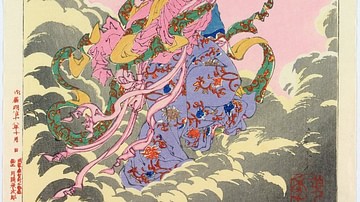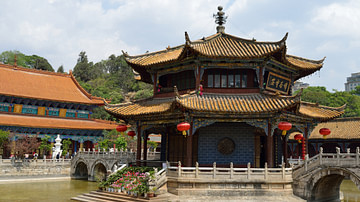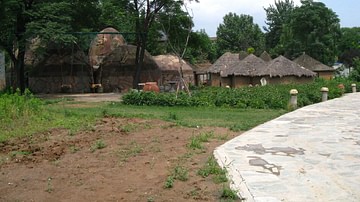Review

| Rating: | |
|---|---|
| Title: | Your Travel Guide to Ancient China (Passport to History) |
| Author: | Josepha Sherman |
| Publisher: | Lerner Pub Group |
| Published: | 2024 |
| Pages: | 96 |
Your Travel Guide to Ancient China (Passport to History) by Josepha Sherman is a children's book, written for ages 9 and older and targeted for a grade-level of 4 and up, but any adult reader will enjoy this book and get a great deal out of it. It is part of the Passport to History series published by Lerner and, like the others, is a great reading experience. The book presents the history as though the reader is an ancient traveler going on a trip to China. The chapters cover topics such as 'The Basics' (landscape, Chinese names, language tips), 'How to Get Around' (ways ancient Chinese people would travel), 'Where to Stay', 'What to See and Do', 'What to Eat' and other topics one would find in an actual travel guide; only with this book one is traveling back in time to ancient China.
The book's information is completely accurate. The author, Josepha Sherman, is a former curator for the Metropolitan Museum of Art in New York City and has a number of other books to her credit. A reader not only gets ancient history, though, but also very practical information one should have in the present day, living and working in diverse communities at college and on the job. An example is the two paragraphs Sherman has on The Name Game in which she explains how Chinese names work:
In Western cultures such as in the United States, we put our personal names, such as James or Alice, first, and then add our family names, such as Smith or Williams. But in China, showing the family you belong to is more important than showing who you are as an individual. Knowing who your family is tells everyone where you fit into life. So the family name always comes first. If you're born into the Li family and were given the personal name of Yuen, your proper name is Li Yuen (16).
In college and at work, I have heard many people in the United States confuse Chinese names and call someone from China by their first name confusing it with their last, similar to calling a person named Jen Reussler 'Miss Jen' instead of 'Miss Reussler' or by their last name as though it were their first (like calling Jen Reussler simply 'Reussler') which is quite rude. This kind of mistake is easily avoided when one knows how Chinese names work and this book provides many easy-to-learn tips along these lines.
Periodically throughout the book, a reader will find 'Hot Hints' which are small inserts (sidebars) of information expanding on the subject on that page. For example, in a section discussing architecture and the use of dragons, Sherman writes:
Chinese dragons aren't the scary creatures of the fairy tales you have read. Most Chinese dragons, according to the stories, are wise and intelligent. Some of them are godlike beings in charge of the rain or major rivers. Chinese dragons will sometimes help humans, especially emperors. Imperial robes often feature a finely embroidered five-clawed dragon (26).
At the end of the book, there are two projects a reader can work on to increase one's appreciation of the culture: how to make a scroll and how to make Szechuan chicken. The instructions given work well and I have tried both with success (though I left the chicken out of the recipe as I am a vegetarian and tofu worked fine). The book has a glossary, pronunciation guide for names, and an extensive bibliography for further reading.
Although the book is aimed at a young audience, it is great fun for any reader of any age. My mother, for example, likes to read historical fiction and sometimes wants a simple, brief introduction to a culture to clarify something she is reading or to decide if she wants to find out more about a culture. I recommended this book to her and she enjoyed it a great deal. I recommend this book to any reader, though, because it is very well written, accurate in its information, and takes a reader on a little journey back in time to travel through ancient China.
About the Reviewer
Cite This Work
APA Style
Mark, E. (2016, February 12). Your Travel Guide to Ancient China (Passport to History). World History Encyclopedia. Retrieved from https://www.worldhistory.org/review/102/your-travel-guide-to-ancient-china-passport-to-his/
Chicago Style
Mark, Emily. "Your Travel Guide to Ancient China (Passport to History)." World History Encyclopedia. Last modified February 12, 2016. https://www.worldhistory.org/review/102/your-travel-guide-to-ancient-china-passport-to-his/.
MLA Style
Mark, Emily. "Your Travel Guide to Ancient China (Passport to History)." World History Encyclopedia. World History Encyclopedia, 12 Feb 2016. Web. 19 Apr 2024.



